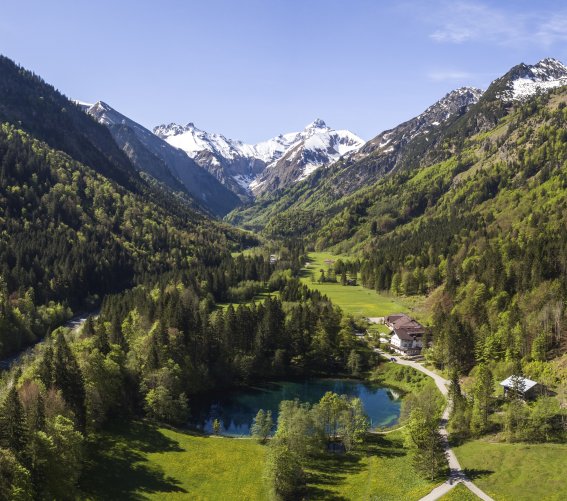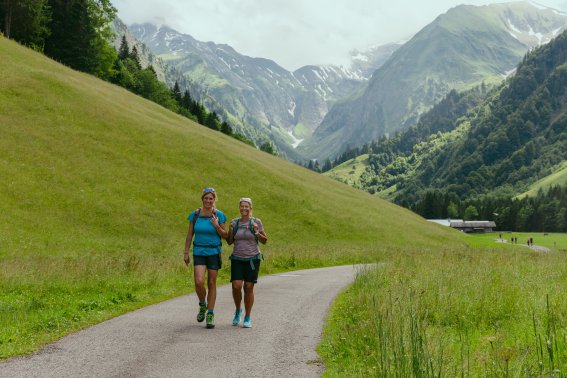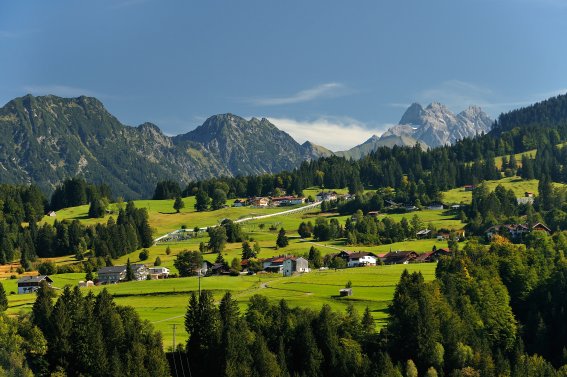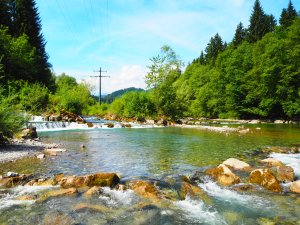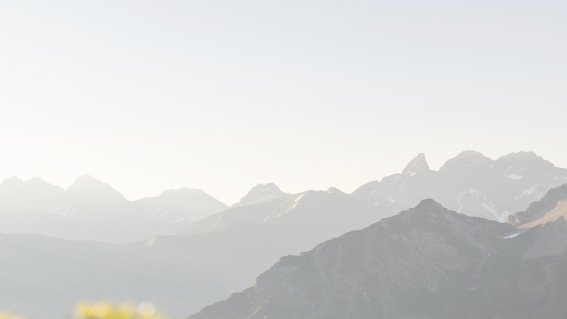are characterised by glacial drift from the latest ice age, which has been ongoing for 2.5 million years and has included both cold and warm periods. During the coldest of these, the glaciers in the Upper Allgäu reached heights of up to 2,000 metres, with only the highest summits in the Allgäu Alps protruding from the ice.
The valley glaciers from Oberstdorf’s large side valleys gradually crept south, forming the terrain that is visible today (for example the Stillachtal Valley). Smaller side glaciers were unable to embed themselves as deeply and so created many little side valleys at a slightly higher altitude (for example the Dietersbachtal Valley). As the glaciers receded, emergent watercourses at their intersections formed deep canyons and ravines, like the present-day Hölltobel Ravine. At the end of the valleys, you will find impressive traces of the former valley glacier: steep, semi-circular trough heads, many of which tower to several hundred metres in height.
